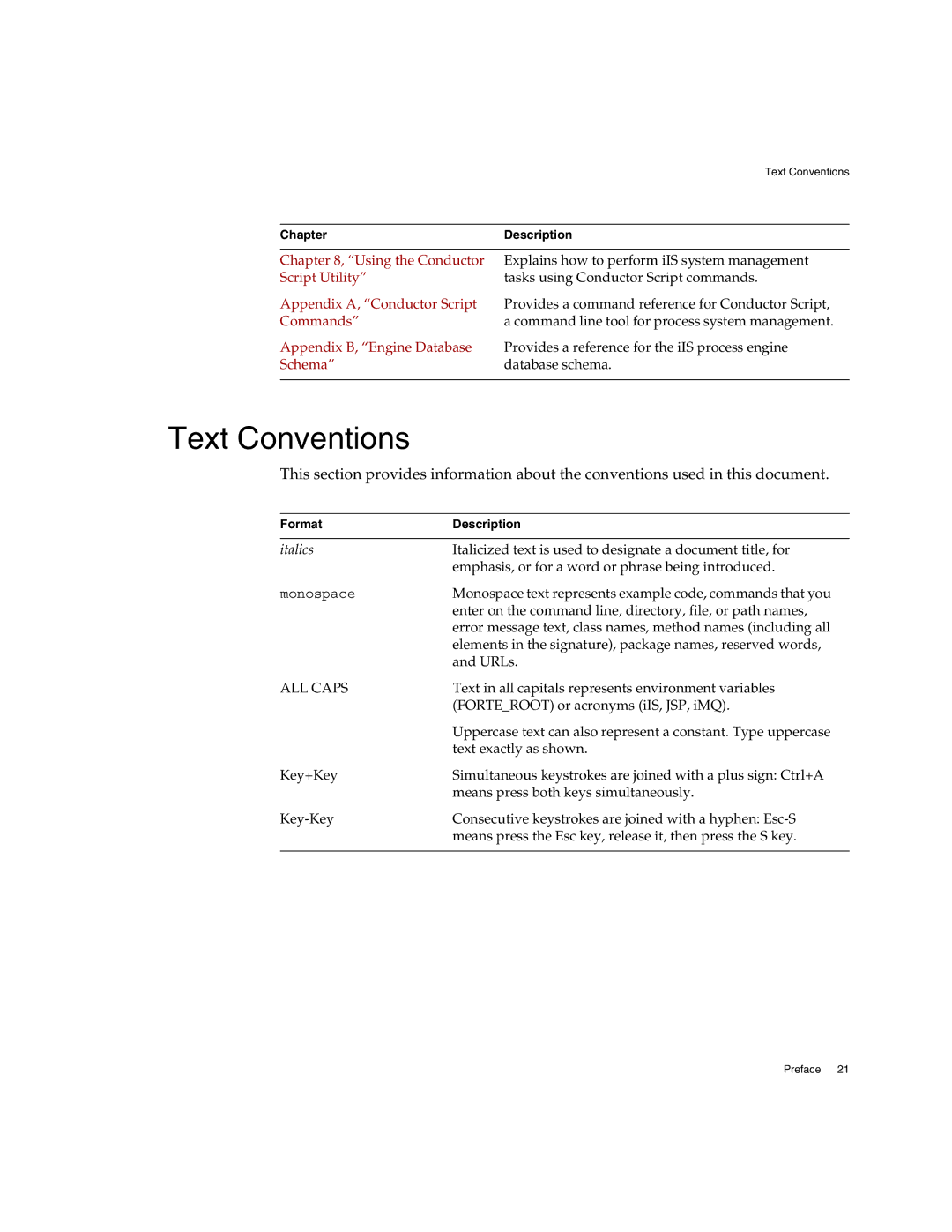| Text Conventions |
|
|
Chapter | Description |
|
|
Chapter 8, “Using the Conductor | Explains how to perform iIS system management |
Script Utility” | tasks using Conductor Script commands. |
Appendix A, “Conductor Script | Provides a command reference for Conductor Script, |
Commands” | a command line tool for process system management. |
Appendix B, “Engine Database | Provides a reference for the iIS process engine |
Schema” | database schema. |
|
|
Text Conventions
This section provides information about the conventions used in this document.
Format | Description |
|
|
italics | Italicized text is used to designate a document title, for |
| emphasis, or for a word or phrase being introduced. |
monospace | Monospace text represents example code, commands that you |
| enter on the command line, directory, file, or path names, |
| error message text, class names, method names (including all |
| elements in the signature), package names, reserved words, |
| and URLs. |
ALL CAPS | Text in all capitals represents environment variables |
| (FORTE_ROOT) or acronyms (iIS, JSP, iMQ). |
| Uppercase text can also represent a constant. Type uppercase |
| text exactly as shown. |
Key+Key | Simultaneous keystrokes are joined with a plus sign: Ctrl+A |
| means press both keys simultaneously. |
Consecutive keystrokes are joined with a hyphen: | |
| means press the Esc key, release it, then press the S key. |
|
|
Preface 21
